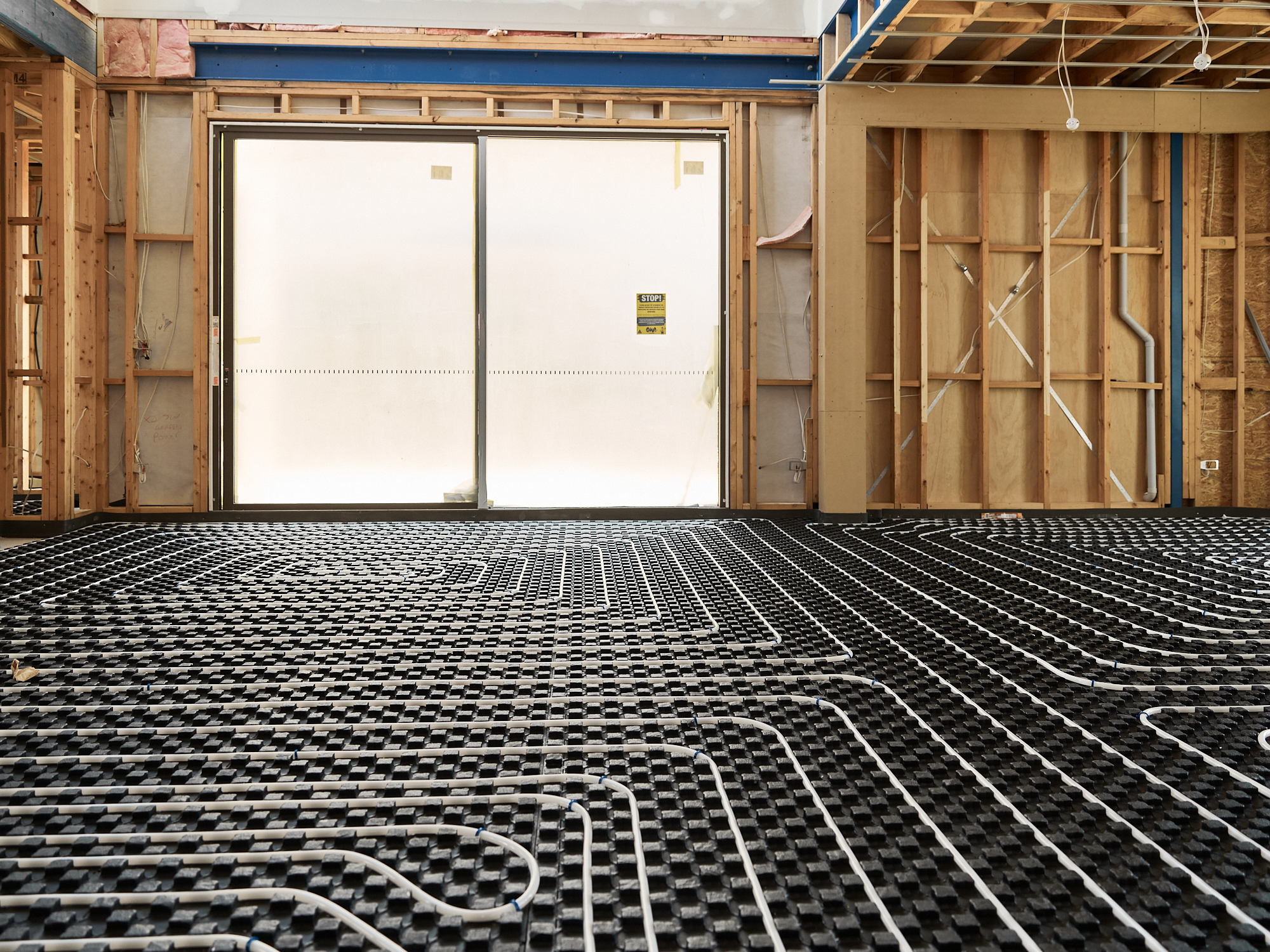As architects and builders continue to prioritise energy-efficient, sustainable solutions, hydronic heating has emerged as a premium choice for heating residential and commercial spaces. Unlike traditional forced-air systems, which can cause drafts and uneven temperature distribution, hydronic heating delivers radiant warmth that enhances comfort, reduces energy consumption, and integrates seamlessly with modern designs.
For residential developments and large-scale commercial projects, hydronic heating presents a superior alternative, offering zoning flexibility, silent operation, and long-term cost savings. But what makes hydronic heating the right choice for your next project?
What is Hydronic Heating?
Hydronic heating uses heated water circulated through a network of pipes to deliver consistent warmth. The heat can be distributed through underfloor heating, radiators, or wall-mounted panels to evenly warm the space. Unlike ducted systems that rely on forced air, hydronic heating eliminates the issues associated with air movement, such as drafts and temperature fluctuations. The result is a more comfortable and consistent indoor climate.
The heated water in a hydronic system is often sourced from a central boiler, heat pump, or solar panels, making it compatible with renewable energy sources and enhancing its overall energy efficiency.
Hydronic systems can also be easily integrated into new builds or retrofitted into existing buildings, offering excellent flexibility for various project types, from small residential homes to large commercial spaces.
Why Architects & Builders Prefer Hydronic Heating
There are several compelling reasons why architects and builders are increasingly choosing hydronic heating for their projects. Let’s break down the benefits:
1. Superior Energy Efficiency
Water is a much better conductor of heat than air, which means that hydronic heating systems are far more efficient than forced-air systems. The system distributes heat more effectively, reducing the amount of energy required to achieve the desired temperature and lowering energy bills.
In addition, hydronic heating systems can be integrated with sustainable energy sources, such as heat pumps or solar power. By pairing hydronic heating with these renewable energy sources, you can significantly reduce the building’s carbon footprint and increase the system's energy efficiency.
2. Seamless Design Integration
One of the most significant advantages of hydronic heating is its ability to be concealed within the architecture of a building. Underfloor heating and wall-mounted panels can be integrated into floors and walls, preserving the aesthetics of the space and eliminating the need for bulky ductwork.
This makes hydronic systems particularly attractive for high-end residential projects and commercial spaces where visual appeal and design integrity are important. With the system hidden out of sight, the space maintains its clean lines and open feel.
3. Zoning & Customisation
Hydronic heating systems offer excellent zoning flexibility, allowing precise control over different rooms or areas of the building. Each zone can be controlled individually, so you can set different temperatures based on the room's function or occupancy.
This is particularly beneficial for large homes, multi-residential developments, or office spaces where different areas may require independent climate control. Zoning also ensures that energy isn’t wasted in unoccupied spaces, which improves efficiency and further reduces costs.
4. Healthier Indoor Air Quality
Since hydronic systems don’t rely on forced air circulation, they do not stir up dust, allergens, or other airborne particles. This makes them ideal for people with asthma or allergies, as the air remains cleaner and healthier.
With traditional forced-air systems, the constant circulation of air can exacerbate respiratory issues, but hydronic systems eliminate this problem, contributing to a better indoor air environment.
5. Longevity & Low Maintenance
Hydronic heating systems are designed to last. With an average lifespan of 20–30 years, hydronic systems tend to outlast many traditional heating solutions. They are also highly durable and require minimal maintenance.
Unlike ducted systems, which can suffer from issues like blocked ducts, dirty filters, and other mechanical failures, hydronic systems generally require far fewer interventions. This results in lower long-term operational costs and higher reliability.
Is Hydronic Heating the Right Fit for Your Project?
Hydronic heating is an excellent choice for new builds, renovations, and large-scale developments due to its unmatched efficiency, design flexibility, and long-term savings. Whether you’re looking to integrate underfloor heating, radiator panels, or even towel warmers in a bathroom, hydronic heating offers a clean, comfortable, and energy-efficient solution.
For architects and builders, hydronic heating presents a future-proof investment that enhances both functionality and aesthetics, all while contributing to sustainability goals. The system can be designed to seamlessly integrate with your building’s layout, making it an ideal choice for both modern homes and high-performance commercial spaces.
At Optima, we specialise in tailoring hydronic heating solutions to meet the specific needs of our clients. Our in-house experts work closely with architects, builders, and developers to ensure optimal design and installation, providing systems that deliver comfort, efficiency, and longevity.
Future-Proof Your Building with Hydronic Heating
Hydronic heating is one of the most energy-efficient, sustainable, and comfortable heating solutions available today. Whether you're working on a new build, a renovation, or a large-scale commercial project, hydronic systems offer the efficiency, flexibility, and performance that modern buildings require.
If you're ready to invest in a heating solution that combines long-term savings with superior comfort, speak to Optima today about how hydronic heating can benefit your next project.
Contact Optima today to discuss your hydronic heating needs.

.svg)
